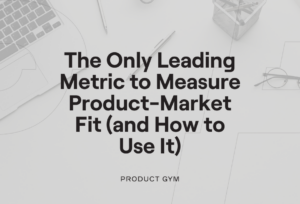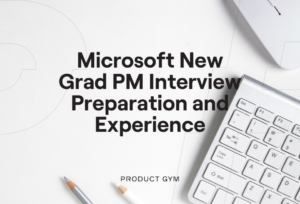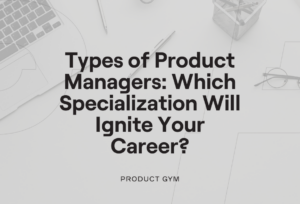The take-home assignment has become more popular and important than ever in the Product Manager interview process. At Product Gym, we receive numerous questions from our members about case studies. Most of them are confused about the vague nature of case study prompts or lack of details about what is expected from the candidate.
If you do not have support, you just might be spending all your time working on these time-consuming take-home assignments. Since job hunting is a numbers game, you do not want to spend more time on one case study project than you need to!
let’s break down the take-home assignment with an example. We’ll be going through this case study assignment in the form of a conversation. We’ll go over the candidate’s work and ask them guiding questions to assess if their approach is the best approach to solve the problem.
The Prompt
Dear Product Gym,
I am interviewing with a big-name tech firm, and I am on the final round. They have sent me a challenge, and I have to send it back by today at 5. Next Monday, I have to present it in 60 minutes with a 45-minute Q&A afterward. They said it is not necessarily 60 minutes of me presenting, but instead 60 minutes of chatting with the people in the panel. The Q&A is with a different group.
The problem that they sent me is very open-ended:
Create a product that would improve the health of an obese patient. Go through the problem, solution, product design, product development, product launch, and product rollout strategy. Include a research allocation plan because there is a $50,000 budget and put on the team.
The Take-Home Assignment Conversation
PG: That is a lot for someone to put together, especially in such a short amount of time. And, they are looking for lots of information. How far have you gotten so far?
Candidate: I decided that the problem I am going to solve is that there is too much information out there for patients to figure out the right plan. I created an app to connect patients to dieticians directly through text.
PG: Is it an SMS app where patients can go, “Hey, I am looking for this dietician,” and it would just connect them to that dietician?
Candidate: I was thinking more so that the patients would state what their needs are, and the app would give them a few dieticians to choose from. I am basing the model off of TalkSpace, an app that connects patients to mental health therapists.
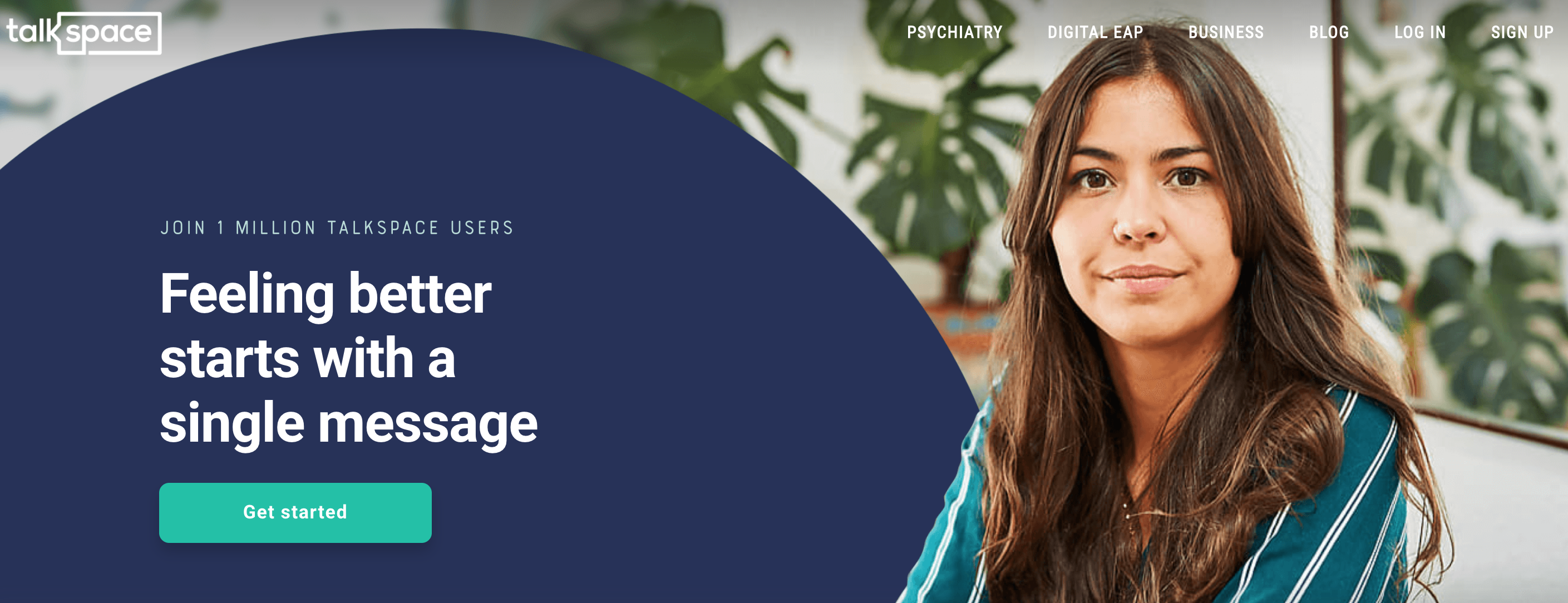
In my app, the dietician would chat with the patient and come up with guidelines or a plan for them to follow. The patient would send pictures of their meals for the dietician to review at the end of every week. It would be based on a monthly subscription business model.
This is the basic version. Eventually, I want to make it so that people could share pictures of their food for others to comment on, like a chat forum.
Tackling Case Study Assignment Questions
PG: Is it a chat app or an SMS chatbot?
Candidate: It is not a chatbot because there would be real people on the other end. The reason it cannot be through simple text messages is that with dieticians, it has to be HIPAA compliant.
PG: If your budget is $50,000, why create an app for the take-home assignment when you could create a simple web app?
You are breaking down the barriers and making it easier to communicate, and so people do not chat through web apps. That is my thought process now. However, I am open to creating a web app.
Candidate: The need is that patients are trying to lose weight, but the overwhelming amount of information makes it difficult for them to seek the right help. My prompt was to create a way to connect patients suffering from obesity with expert advice.
PG: Your reason behind the app solution is that it makes it easier to connect?
Candidate: I talked to a couple of patients and friends who have gone through significant weight loss. A recurring pattern I saw was that they had trouble figuring out who to talk to and were discouraged by the intimidation of having to set up an appointment, go into an office and see someone.
I believe that an app would break down that barrier and make it easier for patients to start that connection.
The Take-Home Assignment Process
Already confused about the candidate’s thought process how they came up with this idea? Make sure you watch our case study solution video with Roman, our case study instructor, to understand how the process works:
Finding an Easy to Use Solution
PG: In the research phase of the take-home assignment, did you ask them if they would install an app on their phone or use a web service?
Candidate: They said that anything that was not phone-based would complicate their daily lives.
PG: The reason I am asking is that if a client came to me wanting to develop this app and told me they had a $50,000 budget, they should know that at least a third of the costs would need to go into the marketing for this.
You would need a solution that is simple and easy to use. You would want to have a mobile web version or a simple website version of it with the accounts and everything set up to chat on there. That solution would be cheaper for you since you have to account for the budget.
The app would work, but you would still need the website because some people might find it easier to go onto their computer at home. In terms of convenience, the most convenient place might be your home.
How to Create a Budget and Timeline
Candidate: I have worked more on web-based products, so I struggle with budgeting. What sort of timeline should I give for creating something like this?
PG: I generally create a scope document first. It should outline the features that I need to have, the features that it should have, and those I want to have in this.
Once you have those need-to-have features figured out, that determines the shortest amount of time in which the app could be built and the minimum amount of money spent.
A need-to-have feature would be the ability to chat with a dietician. A should-have feature would be the ability to choose your dietician.
Candidate: So, the “need” feature would assign whoever is available, and the “should” would let them choose their dietician from a list?
PG: Yes. The “want” would provide a platform that helps them track their progress with the meal plan. And for the “needs,” you would want to add accounts to collect data from the patients.
How to Present Your Take-Home Assignment Solution
PG: You want a slide that details the solution you came up with. In this case, that is the chatbot. Those are the core features which you wish to include in a section of your take-home assignment presentation. It should state:
- Here is what the solution is.
- Here is what the solution looks like.
- Here is how a user would go through the process within this solution.
Candidate: Should I state them through a wireframe?
PG: Yes. What you can do is create a simple wireframe process that shows everything from signing up, selecting a dietician, and chatting with that dietician.
Candidate: Once I have the wireframe, I say, “Given this is how the app work, let’s figure out how to prioritize within our budget.” Is this when I bring out my scope?
PG: That is when you bring out the scope. Detail the core features you are going to build within the $50,000 budget and what you will have with that budget.
Present Your Go-to-Market Strategy
PG: Once you get past that, they are going to ask you about your go-to-market strategy. You will probably want to do some beta testing with a small group of users to refine the process, get feedback, and adjust before you go on to create, say, the analytics process. If you are collecting analytics, but you do not know what exactly you are collecting, then it does not make sense.
Candidate: How do I say that I am going to get to this small group of users?
PG: That would be your rollout plan. The first plan for any product is to get the core evangelists, the people who will rave and rant with your product and be happy to share it with others. This is to get some traction out there.
Figure out your target market. In your case, diet support groups might be an excellent place to start.
Candidate: I would give them the product for free and ask them to test it out for a month?
PG: Exactly. You are going to take all their feedback, learn from it, and make adjustments to your product.
Then you can go into the beta phase, where you branch out more and even consider a small advertising budget to get a wider audience with more helpful feedback. By the time you are ready for version one, you will have enough data points and functionality to start collecting analytics.
Candidate: Should my evangelists be identified before beta?
PG: Yes, that is the initial rollout strategy. You want the evangelists to validate that what you have created makes sense. They would have been with you from the start to be more sympathetic towards what works and what does not work.
From there, make adjustments based on their feedback and come up with a beta version. Evangelists can comprise up to 30 users, and the beta can have 500-1000 users.
Rollout Strategy vs Product Launch
Candidate: What is the difference between the rollout strategy and the product launch?
PG: The product launch would be after the beta. That is when you put in the money for the marketing to reach a broader audience who are not from your initial group of users. Once they come on, they should see the immediate value and expect a functioning product.
Candidate: One thing about dieticians is that they can only practice within the state, meaning I would have to launch the app state-by-state. How should I go about this?
PG: This would also be a part of your rollout strategy. You can test the app in one state, see how it goes, and then release it in others. You can replicate the model you created in, for example, New York in terms of the rollout, and make sure you are abiding by whatever specific rules for each state there are regarding dieticians. By that point, if you are rolling out to New York, your goal would be to get dieticians on board from the local state.
Candidate: I do the wireframes, and as far as the development part, should I have a roadmap or just a scope of the needs that I am addressing?
PG: I would select the technology you will use to build it out instead of a full-blown roadmap. For your budget, I would go with something like React Native. It helps create a mobile application framework. You need to have a back-end and a front-end working, and an API that connects both of them.
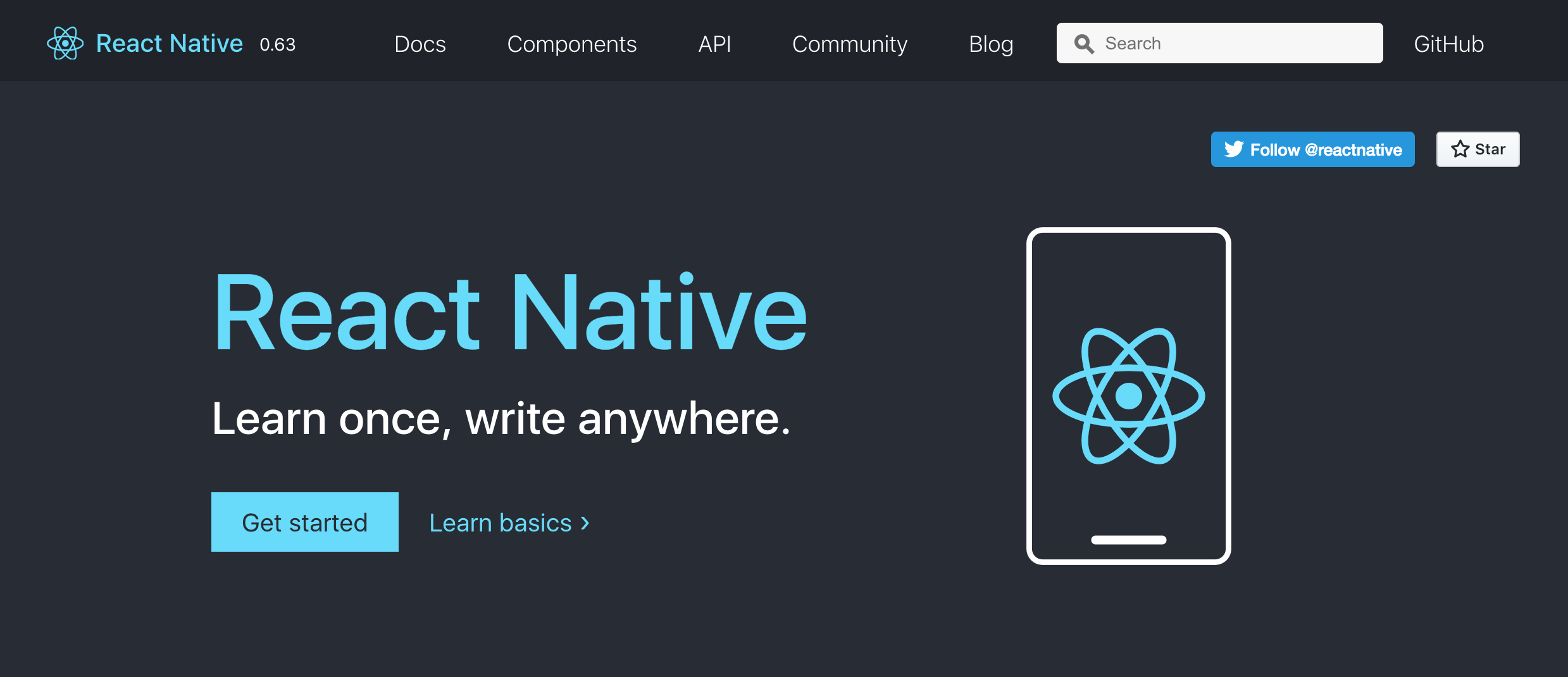
How to Manage Your Budget
Candidate: Should I put the $50,000 budget allocation before I go onto technology?
PG: It depends on the style. I would probably mention it first, and then define the budget for each phase throughout your presentation.
Candidate: How would I deal with paying out the dieticians beyond that first beta?
PG: That is why I said you should have evangelists. You could have the dieticians work with you without paying them, as they are the initial set of influential users on there.
You can say that the initial set of dieticians agreed to be part of the pilot program once the app has rolled out, you can consider what to pay out to the dietician.
The rest of the marketing should go towards paid advertising. You want to have a focus group to get feedback from the users, collecting that data, and making the right adjustments. I would suggest reading up a little more on the rollout strategy to align with what you have come up with so far.
Candidate: Should I include the website as part of my rollout?
PG: Yes. The reason behind choosing React Native is that you can build both the website and the app simultaneously. That would make for more efficient use of your $50,000.
For the back-end, you could quickly build something on Firebase, at least for the first version. Firebase would speed up your development, and everything will be free as far as infrastructure costs.
You would need a developer for the front-end and one for the back end. Since you have a designer, that would make it around $7,500 for each of those people for the project’s entirety.
Go Above and Beyond: Get Your Take-Home Assignment Reviewed by a Professional
You’ve worked through the assignment and put your solution into a slide deck to present to a panel of interviewers: congratulations! But if you want to go above and beyond to impress the hiring team, dedicate some time to getting your take-home assignment reviewed by a professional.
A fresh set of eyes may catch typos and grammar errors, but will also be able to point out the areas where you can improve the solution overall. A Product Manager who’s gone through multiple technical interview rounds is going to be able to assess your take-home assignment and solution from the perspective of the interviewer and use their experience to help you polish it.
At Product Gym, our interview coaches routinely check over members’ case study presentations, offering insight, constructive criticism, and tips on how to make their technical interview round a success.
Solving take-home assignments isn’t just a good practice for acing your interview — it’s also an excellent way to develop applicable Product Manager skills. That’s why we include classes on case studies in our program. Our case study curriculum was developed and continues to be taught by Senior Product Manager for Atlassian, Roman Kolosovskiy.
Because we’ve been working with Product Manager job hunters for the past five years, we’ve had ample opportunity to test and perfect the strategy we teach our members on how to ace a take-home assignment. We’ve even compiled a bank of case study prompts that aspiring Product Managers have received in their interviews so that members can exclusively access to hone their problem-solving and storytelling skills
Nail Your Take-Home Assignment
Beginning to end, your take-home assignment should demonstrate how you approach a problem. You’ll want to do your research, have a clear understanding of your target market, and demonstrate how well you prioritize and plan with a structured approach. You got this!
Want one-on-one help solving case studies and acing the Product Manager interview? Product Gym’s coaches are available to help our members at every stage of the job-hunt. Schedule a free consultation with our career coaches to see if the membership program is the best fit for you. We’d be happy to answer any questions you have, and get you on track to landing the Product Manager job of your dreams.

